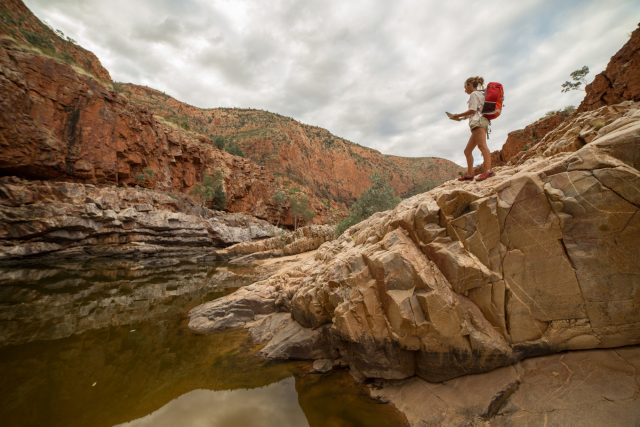It’s easy to think everything in the Aussie bush is out to kill you, and in some cases it’s true. Common sense should keep you safe most of the time but, if you are unlucky, survival expert Bob Cooper offers these hiking and camping first aid tips.
1. Prevention is better than cure
The dangers of hiking in the bush can be heightened by a lack of mobile phone reception. The best solution to preventing minor injuries from becoming potentially life threatening is, aside from well-stocked first aid supplies, to have undertaken a first aid or bush survival course before you set out. As Australia's leading survival expert, Bob offers these courses in person and in his book, Outback Survival.
2. Snake bites
If you are bitten by a snake, stay calm and minimise movement. Call 000 as soon as possible. Wrap a tight pressure bandage on the area. Do not remove clothing - the extra limb movement will advance venom into the blood stream. Bandage over clothing. Don’t wash the bite site - venom on the outside of the skin is how medics identify the type of snake that bit you. Do not attempt to suck out the venom, as you may have seen in movies. You may poison yourself. Do not apply ice. It doesn’t help and wastes time. Don’t elevate the limb as this increases the venom flow rate. Lastly, do not apply a tourniquet – when pressure is released, there is a rapid flow of venom into the body.
3. Dehydration
The vast Aussie bush can be unforgivingly dry and dehydration is possibly the most common dangers of camping, so pack enough water to last the trip. Have water purification tablets in your first aid kit in case of emergency. Bob also advises tying a plastic bag around a cluster of gum tree leaves. After a few hours the leaves will have sucked enough moisture from the roots to provide you with drinkable water.
4. Getting lost
While not strictly a first aid emergency, becoming lost can quickly escalate into one. Be sure to pack what Bob calls the ‘trilogy of survival’: a survival kit (containing bandages, pocket knife, mini compass, signalling devices, whistle, plastic bag, torch and water purification tablets) as well as a rescue blanket, and snake bite bandages.
5. Blisters, bites and stings
Be sure to pack Condy’s crystals (aka potassium permanganate), which can be used to treat a number of skin conditions including fungal infections, impetigo, superficial wounds, and tropical ulcers.
6. Twisted ankle
Sprained ankles are one of the most common hiking injuries. First aid treatment involves elevating the leg, icing the area, and compressing with a bandage. It’s likely you won’t have ice handy to reduce swelling so try and rest the ankle as much as possible so the ligaments don’t tear even further.
7. Broken bones
Broken bones are a first aid emergency that calls for a splint. If you don't have a splint in your first aid kit, fashion one from a branch or section of tent pole. Bandage the splint to the fractured area, making sure it's not too tight. For a broken arm, make a sling from a T-shirt, pillowcase, or bandana.
8. Exposure
Exposure is one of the major dangers of bush hiking so it’s important to recognise your limits. Find shelter, shade and stay calm. Conserve your energy and try not to let fear cloud your head. Preserve your energy and your water, stay positive and make a coherent plan.
9. Sunburn
Aloe vera is a sunburn lifesaver. However, nothing beats prevention. Wear a hat, pack a long-sleeved shirt and apply high-SPF sunblock before heading out in the elements. Don’t wait until you feel the burn.
10. Eating poisonous plants
Bush flora can be toxic. Depending on the plant, it may cause vomiting, a rash, hallucinations, or even death. An antihistamine may alleviate an allergic reaction, but knowledge is key: if you don't know what it is, don't put it in your mouth. Bob's pocket-sized survival manual helps identify poisonous plants, as well as edible bush tucker that you can forage for if you run out of food.
Bob believes we need to recapture the survival skills our ancestors knew instinctively. “This kind of understanding of our natural environment,” he says, “can save lives.”
Visit Bob Cooper Survival for courses, books, kits and more.
